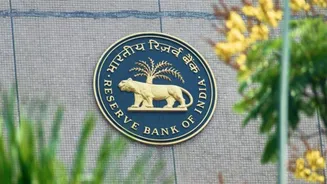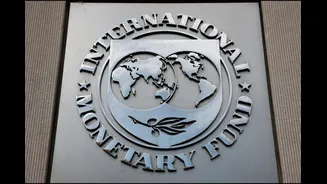What is the story about?
Recent reports suggest that the central government is mulling a Sovereign Wealth Fund (SWF) for India which could be sized a substantial $50 billion at its inception. While it is yet unclear as to what specific objectives are driving the Indian SWF proposal, there is no doubt that SWFs have widely emerged as an important lever in several nations’ fiscal toolkit with as many as 183 SWFs in existence currently across the world. SWFs have been reported to manage nearly
$14 trillion worth of assets globally. Establishing such an entity for India may be useful but requires an in-depth consideration of several critical aspects.
SWFs across the world differ significantly, sharing few common features beyond being a state-owned investment vehicle. This variety is especially noticeable as to the purpose of establishing the SWF. The earliest formally-constituted SWFs were focussed on managing and investing national windfall surpluses from natural resources, primarily petroleum.
The now-iconic Temasek SWF of Singapore was established to manage the equity holdings and investments of the Singaporean government in domestic businesses separating the policy and investment management functions, a role from which it has now evolved out of to a significant extent. In recent years, it has also become a key mechanism of strategic control over industries that are considered important for national priorities, a purpose which has become notably vital given the geopolitical risks. Some SWFs are also aimed at catalysing internal investment, capital protection for reserve assets, and even advancing soft power.
While considering a SWF for India, clarifying the purpose of the SWF will be the paramount consideration. Since each of the SWF objectives involves a very different investment theses, management strategy, and administrative structures; clarity of objectives is enormously important. Some of the objectives may even conflict with each other.
Protection of reserve assets requires at most an inflation-neutral return, a wealth multiplication SWF may only be considered effective at a much higher return, while a catalyst SWF may desire only a nominal net-positive return. Narrowly defining the goal of the Indian SWF will be critical not only for adjudging the usefulness of such a fund for India, but also for articulating the criteria of its success as well as setting the right expectations among the people.
One vital aspect of SWFs, often overlooked in the discourse, is the nature and size of the return which is accrued through this mechanism and their suitability as a stable source of revenue to the national exchequer. A sizable proportion of the SWF asset gains are based on mark-to-market calculations and may not necessarily be realized in case of a regular outflow of dividends to the exchequer. Most countries place a limit on the annual withdrawals from the funds and even in mature examples like Singapore, their contribution to the total national budget is relatively limited (18%). To reach a comparable level of annual exchequer contribution in India even with a high presumptive return of 15%, the Indian SWF would likely require an asset base of around $700 billion.
Another critical consideration is the source of financing for this fund. Without access to any surpluses and with a considerable fiscal deficit, India may have to rely on raising funds from the market with the expectation that anchor funding by the government could encourage private entities to invest money. However, in this case, any such fund would not differ significantly from existing government-promoted investment vehicles like NABARD, SIDBI etc. that rely primarily on market borrowings.
This also has implications for the wider economy both in case of the funds being raised in the domestic market (constraining credit availability for private entities) and in the foreign market (effect on exchange rates and foreign debt levels). One viable option could be to seed the SWF with the central government’s equity holdings in public sector enterprises and other entities, which currently stand at around $83 billion.
Further, accountability and transparency about the activities of the SWF are very critical, especially in democracies like India. There is an obvious need to make sure that publicly-owned resources and national wealth are properly managed and preserved.
On the other hand, without adequate freedom to identify appropriate investment opportunities and make investment/divestment choices based on market conditions, the SWF may not be able to achieve its defined objectives. There are also implications regarding the oversight and monitoring of such decisions through legally-mandated auditing mechanisms of government resources. While issues of this kind may be partly addressed through a robust legal framework, a guideline-driven decision-making approach, and recruitment of professional administrators; many issues may still surface in practice.
There are also doubts as to how effective SWFs can be in achieving goals like strategic stake-holding in strategically-critical foreign companies as such companies are still subject to the local jurisdictions. Local governments may be vulnerable to geopolitical pressures. In such cases, any expected control is no real control at all. Parallelly in the case of Indian companies, the extent to which the SWF is insulated from the unnecessary influence of the government and in turn itself refrains from swaying the decisions of its investee companies on behalf of the government will have a serious effect on the success of the fund.
In the context of these issues, the idea of an Indian SWF requires deep and deliberate contemplation. India has already experimented with a SWF-like entity in the form of the National Infrastructure and Investment Fund (NIIF); however, its scale, success and contribution have been limited. Any new body must incorporate lessons from this endeavour as well as the global SWF experience as this could be a decision with a significant intergenerational impact on national resources. We should embark on creating a SWF if we need it not merely because we desire it.
—The author, Mohitkumar Daga, is an independent public policy consultant. The views are personal.
SWFs across the world differ significantly, sharing few common features beyond being a state-owned investment vehicle. This variety is especially noticeable as to the purpose of establishing the SWF. The earliest formally-constituted SWFs were focussed on managing and investing national windfall surpluses from natural resources, primarily petroleum.
The now-iconic Temasek SWF of Singapore was established to manage the equity holdings and investments of the Singaporean government in domestic businesses separating the policy and investment management functions, a role from which it has now evolved out of to a significant extent. In recent years, it has also become a key mechanism of strategic control over industries that are considered important for national priorities, a purpose which has become notably vital given the geopolitical risks. Some SWFs are also aimed at catalysing internal investment, capital protection for reserve assets, and even advancing soft power.
While considering a SWF for India, clarifying the purpose of the SWF will be the paramount consideration. Since each of the SWF objectives involves a very different investment theses, management strategy, and administrative structures; clarity of objectives is enormously important. Some of the objectives may even conflict with each other.
Protection of reserve assets requires at most an inflation-neutral return, a wealth multiplication SWF may only be considered effective at a much higher return, while a catalyst SWF may desire only a nominal net-positive return. Narrowly defining the goal of the Indian SWF will be critical not only for adjudging the usefulness of such a fund for India, but also for articulating the criteria of its success as well as setting the right expectations among the people.
One vital aspect of SWFs, often overlooked in the discourse, is the nature and size of the return which is accrued through this mechanism and their suitability as a stable source of revenue to the national exchequer. A sizable proportion of the SWF asset gains are based on mark-to-market calculations and may not necessarily be realized in case of a regular outflow of dividends to the exchequer. Most countries place a limit on the annual withdrawals from the funds and even in mature examples like Singapore, their contribution to the total national budget is relatively limited (18%). To reach a comparable level of annual exchequer contribution in India even with a high presumptive return of 15%, the Indian SWF would likely require an asset base of around $700 billion.
Another critical consideration is the source of financing for this fund. Without access to any surpluses and with a considerable fiscal deficit, India may have to rely on raising funds from the market with the expectation that anchor funding by the government could encourage private entities to invest money. However, in this case, any such fund would not differ significantly from existing government-promoted investment vehicles like NABARD, SIDBI etc. that rely primarily on market borrowings.
This also has implications for the wider economy both in case of the funds being raised in the domestic market (constraining credit availability for private entities) and in the foreign market (effect on exchange rates and foreign debt levels). One viable option could be to seed the SWF with the central government’s equity holdings in public sector enterprises and other entities, which currently stand at around $83 billion.
Further, accountability and transparency about the activities of the SWF are very critical, especially in democracies like India. There is an obvious need to make sure that publicly-owned resources and national wealth are properly managed and preserved.
On the other hand, without adequate freedom to identify appropriate investment opportunities and make investment/divestment choices based on market conditions, the SWF may not be able to achieve its defined objectives. There are also implications regarding the oversight and monitoring of such decisions through legally-mandated auditing mechanisms of government resources. While issues of this kind may be partly addressed through a robust legal framework, a guideline-driven decision-making approach, and recruitment of professional administrators; many issues may still surface in practice.
There are also doubts as to how effective SWFs can be in achieving goals like strategic stake-holding in strategically-critical foreign companies as such companies are still subject to the local jurisdictions. Local governments may be vulnerable to geopolitical pressures. In such cases, any expected control is no real control at all. Parallelly in the case of Indian companies, the extent to which the SWF is insulated from the unnecessary influence of the government and in turn itself refrains from swaying the decisions of its investee companies on behalf of the government will have a serious effect on the success of the fund.
In the context of these issues, the idea of an Indian SWF requires deep and deliberate contemplation. India has already experimented with a SWF-like entity in the form of the National Infrastructure and Investment Fund (NIIF); however, its scale, success and contribution have been limited. Any new body must incorporate lessons from this endeavour as well as the global SWF experience as this could be a decision with a significant intergenerational impact on national resources. We should embark on creating a SWF if we need it not merely because we desire it.
—The author, Mohitkumar Daga, is an independent public policy consultant. The views are personal.
Do you find this article useful?

















